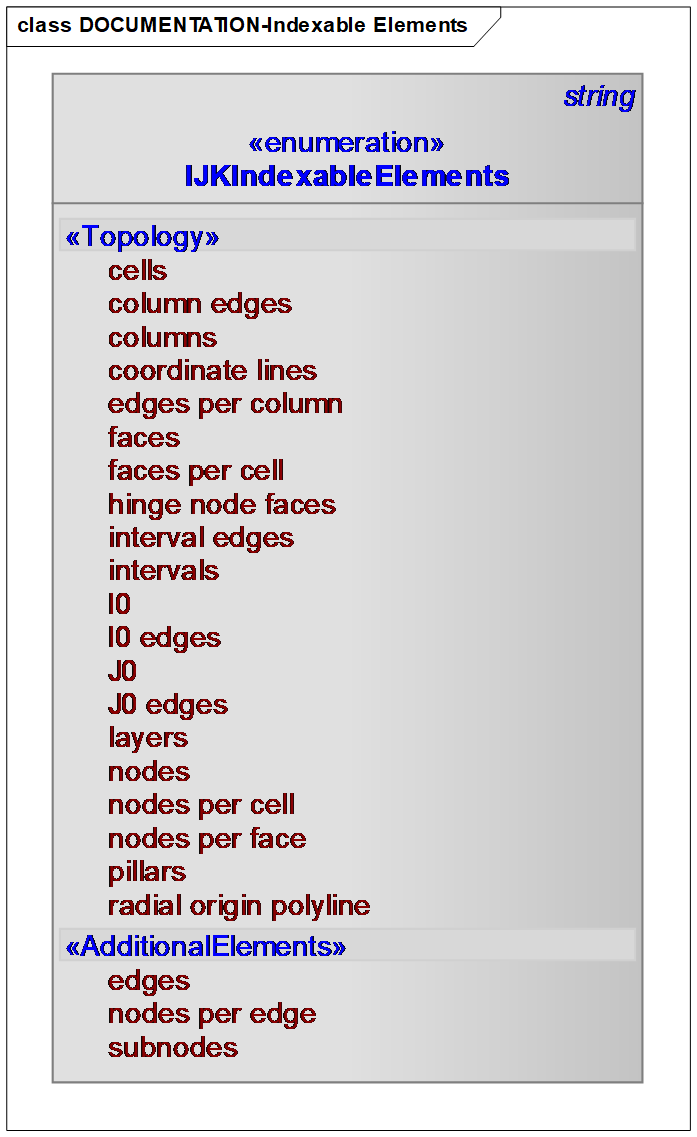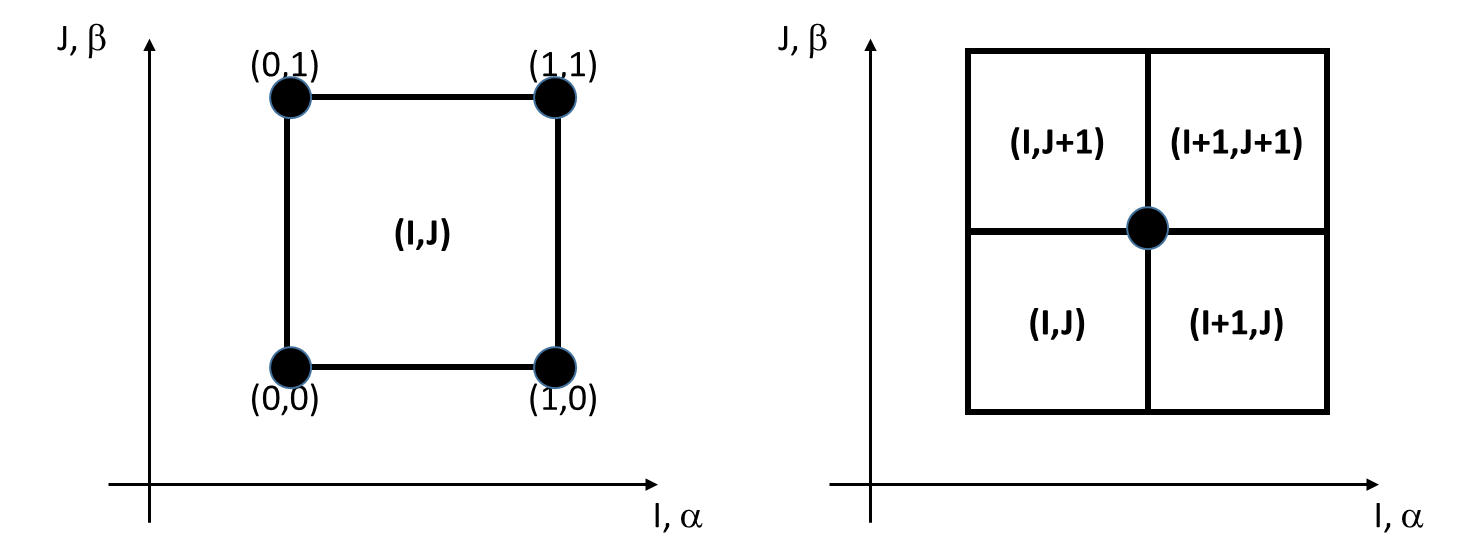11.12.3 IJK Grid Indexable Elements
| Topic Version | 1 | Published | 09/11/2015 | |
| For Standard | RESQML v2.0.1 | |||
Figure 11.12.3-1 lists the indexable elements for IJK grids.

RESQML v1 introduced six indices for the corner-point grid: (,I,J,K), which are also part of RESQML v2. The (I,J,K) indices have already been described.
The () indices each take on the values (0,1). They are aligned with the (I,J,K) directions, respectively, and are used to index the nodes and faces within a cell. In v2, they also contribute to the enumeration of many of the other grid elements. When designing the IJK grid indexing we made two choices, which are intended to simplify implementation:
- Consistent grid indexing between block-centered (no geometry) and nodal grids.
- Consistent grid indexing between IJK and unstructured column grids using a shared column-layer indexing and geometry.
As an example of the enumeration and the use of the indices to implicitly specify the grid topology, consider the relationship between columns and pillars shown in Figure 11.12.3-2 .

Their indices are:
Column index = I0 + NI*J0
Pillar index = (I0+) + NIL*(J0+)
Again, I0=I-1, J0=J-1 and also NIL=NI+1. The form of the indexing in these equations determines the topological relationship between the columns and the pillars. For one column, indexed by (I,J), there are four adjacent pillars indexed by () = (0,0), (1,0), (1,1), and (0,1). With the form of the pillar indexing, we obtain the same index for I and =1 as for I+1 and =0. As a consequence, the four columns (I,J), (I+1,J), (I+1,J+1) and (I,J+1) implicitly share the same pillar. Similar relationships exist in a cross-sectional view of a grid, for example, between the layer intervals and the interval edges.
The indexing for the IJK grid has more implicit relationships between the grid elements than any other grid class. By choice—as much as possible—the IJK grid indexing and the unstructured column-layer grid indexing are identical. Specifically, the following node order is followed for IJK grids: () = (0,0), (1,0), (1,1), (1,0), (0,0). With this specification, the indexing for the IJK grid is identical to that of a corresponding unstructured column-layer grid. However, unlike the unstructured column-layer grid, the relationship between column and pillar is implicit.
Element indexing is described using the following indices:
- I0=0…NI-1, J0=0…NJ-1 and K0 = 0…NK-1
- = 0,1, = 0,1 and = 0,1
- L=0…NKL-1 = NK + GapCount
The first three indices correspond to the (I,J,K) indices of a corner-point grid, except that they are now explicitly 0-based. The next three (node) indices have not changed their usage since RESQML v1. The interval index, L, includes both layers and gaps, and is useful for indexing grids with K gaps.
A number of indexable elements that depend upon NI and NJ, and which are not present within the unstructured column-layer grid, arise for IJK grids. Specifically, I0 and J0 and the I0 and J0 edges each have one dimensional indices.